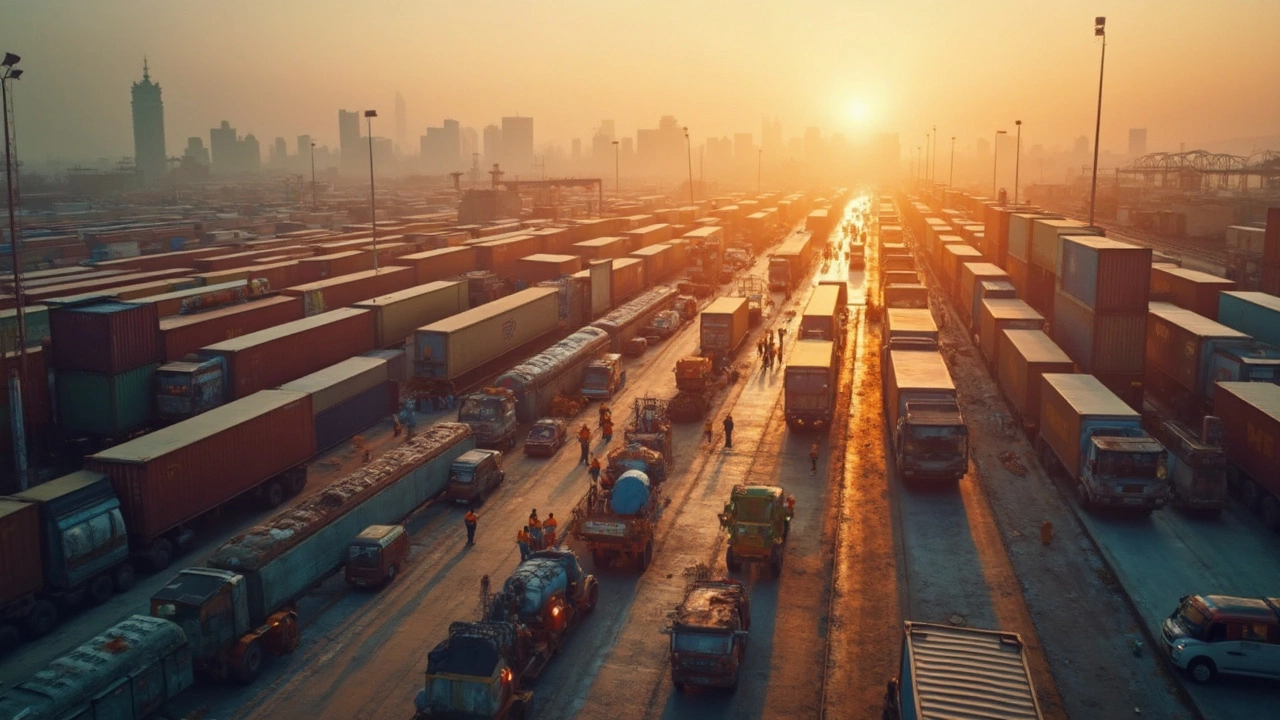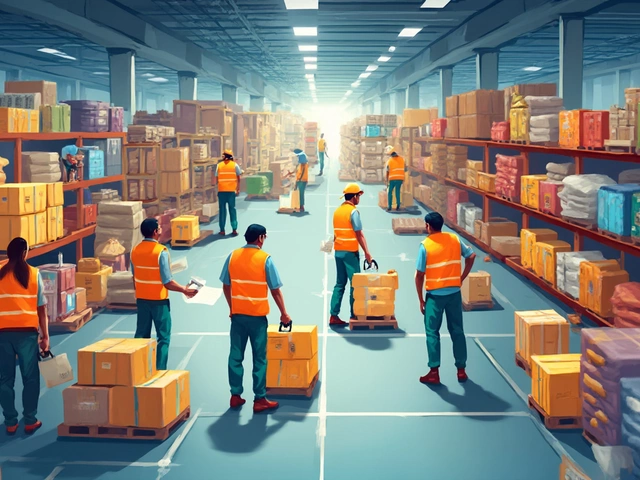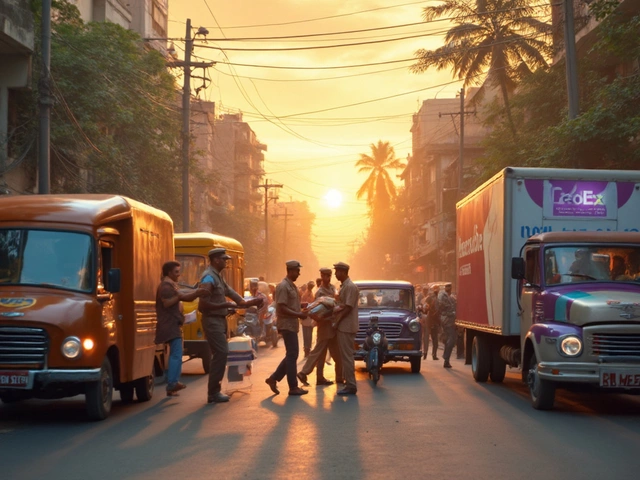It’s wild how much stuff moves across the world every single day—boxes, electronics, medical supplies, you name it. All that movement depends on logistics giants, but have you ever actually wondered who sits at the top of that mountain? The answer isn’t just a trivia fact. If you run a business, order online, or even track a package for your kid (I do this for Everett all the time), knowing who’s the biggest can actually help you make smarter choices.
The logistics world rewards size—being the biggest player usually means faster shipping, better rates, and more reliable service. Companies like UPS and DHL aren’t just moving packages; they’re setting the pace for global trade. But size isn’t everything. Bigger outfits might have more trucks and planes, sure, but they also wrestle with everything from customs headaches to delayed cargo ships stuck at ports.
- Defining 'Largest' in Logistics
- Meet the Global Leader: UPS vs. DHL
- What Makes a Logistics Company Stand Out
- How Size Impacts Service and Speed
- Tips for Working with the Biggest Players
Defining 'Largest' in Logistics
You’d think deciding who qualifies as the largest logistics company would be a simple math problem. But in reality, “largest” can mean a bunch of things in logistics. Are we talking about revenue? Number of shipments? Number of employees? Physical size of their global network? Turns out, each of these paints a different picture.
Most experts look at revenue first. This makes sense since it basically shows how much business a logistics company actually does. But some companies specialize in certain regions or services, so shipment volume can also be a pretty big deal—especially if you're moving tons of stuff daily.
- Revenue tells you who's making the most money.
- Parcel volume counts how many packages a company handles each year.
- Network size shows the number of countries and depots a company covers.
- Fleet size covers trucks, planes, and ships on the move.
- Employees show how much workforce keeps the engine running.
Here’s a handy snapshot comparing some of the biggest names in logistics, based on 2024 data:
| Company | 2024 Revenue (USD billions) | Annual Shipments (billions) | Countries Served |
|---|---|---|---|
| UPS | ~101 | ~6.2 | 220+ |
| DHL | ~98 | ~1.6 | 220+ |
| FedEx | ~90 | ~6.0 | 220+ |
| Maersk | ~57 | ~0.04 (container moves) | 130+ |
Notice UPS, DHL, and FedEx all play on a similar field, but UPS edges out on revenue and package volume. Meanwhile, Maersk crushes it in ocean freight but doesn't handle anywhere near as many parcels as the big couriers. So, if someone brags about their logistics partner being the "largest," it might help to check what metric they mean.
Meet the Global Leader: UPS vs. DHL
When people ask about the largest logistics company, two names always land on top—UPS and DHL. Both are legends in moving stuff everywhere, but their strengths are a bit different.
UPS, or United Parcel Service, is an American behemoth. If you see a brown truck zipping through your neighborhood, odds are it's UPS. The company hauled in over $90 billion in revenue in 2024 and handles around 24 million packages on a normal day. That’s about 1,000,000 packages every hour. Their main turf? North America. UPS owns the busiest private air network in the world, even busier than most airlines.
DHL started in California but is really a German powerhouse now (part of Deutsche Post DHL Group). DHL’s reach is insane—more countries served than any other company, with deliveries in over 220 territories. They pull in a bit less revenue than UPS, but their network is ridiculously global. DHL’s delivery folks go to spots that seem almost impossible, like remote islands and places where hardly any other courier dares to drop off.
The global showdown isn’t just a numbers game. Here’s a quick breakdown of how the two stack up:
| Company | 2024 Revenue (USD) | Countries Served | Daily Packages |
|---|---|---|---|
| UPS | $91 billion | 220+ | 24 million |
| DHL | $85 billion | 220+ | ~14 million |
So, who’s the biggest? In pure revenue and daily packages, UPS takes the crown. If you want reliability in the U.S. and speedy overnight shipping, go for UPS. But if you’re looking to reach somewhere way out there—think remote Indonesia or parts of Africa—DHL often pulls it off where others can’t.
It’s not just about size, though. Each company has its secret sauce. UPS puts major muscle into ground and air operations, while DHL is a wizard at cross-border deliveries and customs work. For online businesses, that difference can seriously impact your shipping costs and delivery times.
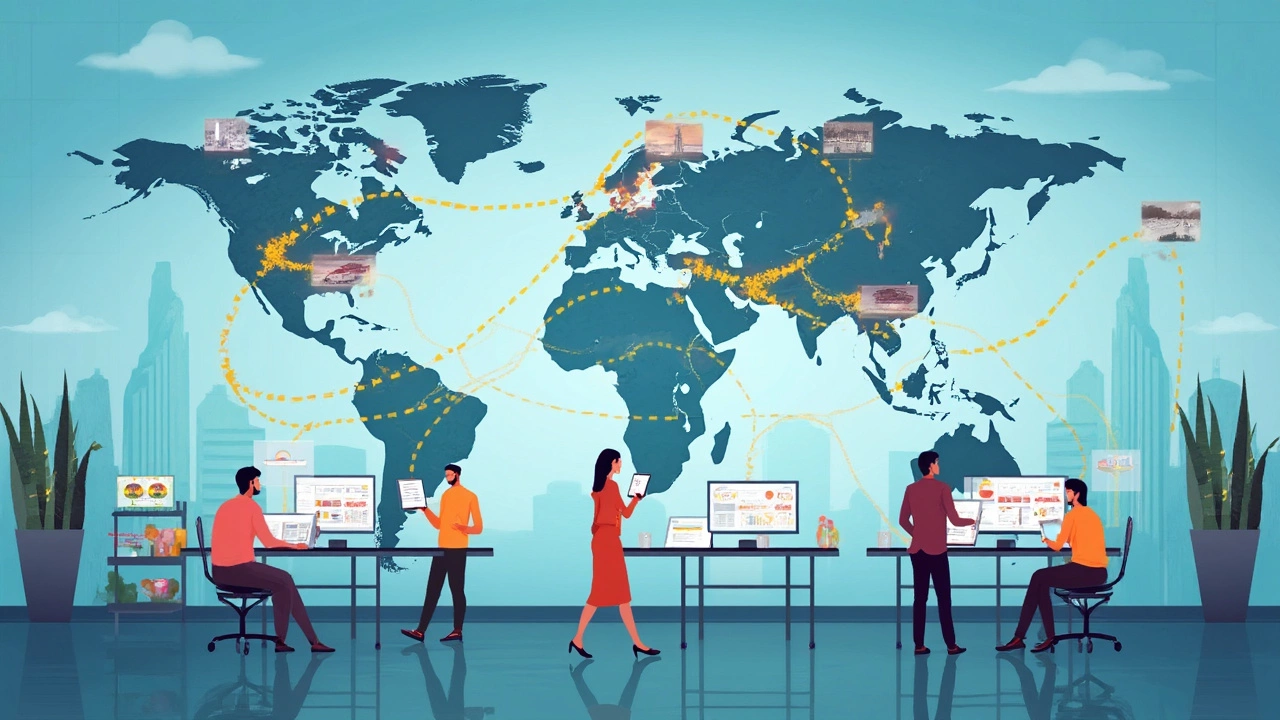
What Makes a Logistics Company Stand Out
When we talk about the biggest names in logistics, it’s not just about having a mountain of trucks or tons of warehouses. The real leaders, like UPS and DHL, have a mix of tech, reach, reliability, and fast problem-solving. What sets them apart isn’t luck—it’s a game plan built on details most other companies don’t always nail.
Largest logistics company in the world means being good at several things at once. Check out what actually puts a logistics company at the top:
- Global Network: The best companies, like UPS, can get a package from Tokyo to Toronto or New York to Nairobi using a maze of routes, hubs, and local partners. Their networks span over 220 countries and territories.
- Technology: Real-time tracking, AI-driven route planning, and automated warehouses keep deliveries on time. DHL uses “smart” warehouses filled with robots that sort packages faster than humans ever could.
- Speed and Flexibility: Customers expect next-day delivery (sometimes even same-day), so giants use overnight air freight and local couriers to make things happen.
- Customer Service: When something goes sideways, like a package lost in transit, having support teams who actually help—on the phone or even on social media—makes all the difference.
- Sustainability: Big players like DHL and UPS are rolling out electric trucks and testing biofuel jets. Both are aiming for net-zero carbon operations by 2050.
Want to see just how much these companies operate? Here’s some hard data:
| Company | Worldwide Employees | Parcels Delivered (2024) | Fleet Size |
|---|---|---|---|
| UPS | 500,000+ | 6.2 billion | 125,000 vehicles, 290 aircraft |
| DHL | 395,000+ | 1.8 billion | 120,000 vehicles, 300 aircraft |
No matter how fancy the ads or colorful the trucks, these stats show the real power behind the biggest players. Tech, reach, speed, and a ton of expertise—that’s what makes a logistics company rise above the rest.
How Size Impacts Service and Speed
If you've ever wondered why your overnight delivery actually arrives overnight (or sometimes early), it usually comes down to the size of the logistics company behind it. Bigger operations like UPS and DHL have networks that stretch across the planet. That massive scale means they can ship a package from New York to Tokyo with barely a hiccup. They own or control fleets of trucks, thousands of delivery vans, and even their own aircraft.
Let’s check the numbers to see how this plays out. Here’s a quick look at key stats for the biggest names:
| Company | Annual Revenue (2024) | Employees | Vehicles Owned | Aircraft Operated | Countries Served |
|---|---|---|---|---|---|
| UPS | $92B | 500,000+ | 125,000+ | >570 | 220+ |
| DHL | $86B | 395,000+ | 120,000+ | >260 | 220+ |
When a company owns this much gear, it can handle peak demand—think Christmas, huge sales events, or even emergency shipments after a disaster. Their tech is another big plus. UPS’s ORION system, for example, uses smart routing to save drivers around 100 million miles a year. Fewer miles means faster stuff and less fuel wasted. DHL leans hard on AI to predict package surges and reroute deliveries, so fewer boxes get caught in delays.
Which brings us to the flipside: when you deal with a giant, you get access to the best tools and fastest routes. Their power makes it less likely your package will sit lost in a warehouse over a holiday. But with so many customers, things don’t always go smooth. You might get better pricing on volume, but personal service can take a hit when you’re 1 out of a million clients.
Here’s a quick tip: If your delivery is really urgent or high-value, going with the largest logistics company usually means safer, speedier service. But if you want a human picking up the phone every time, sometimes a smaller, local place is more nimble.
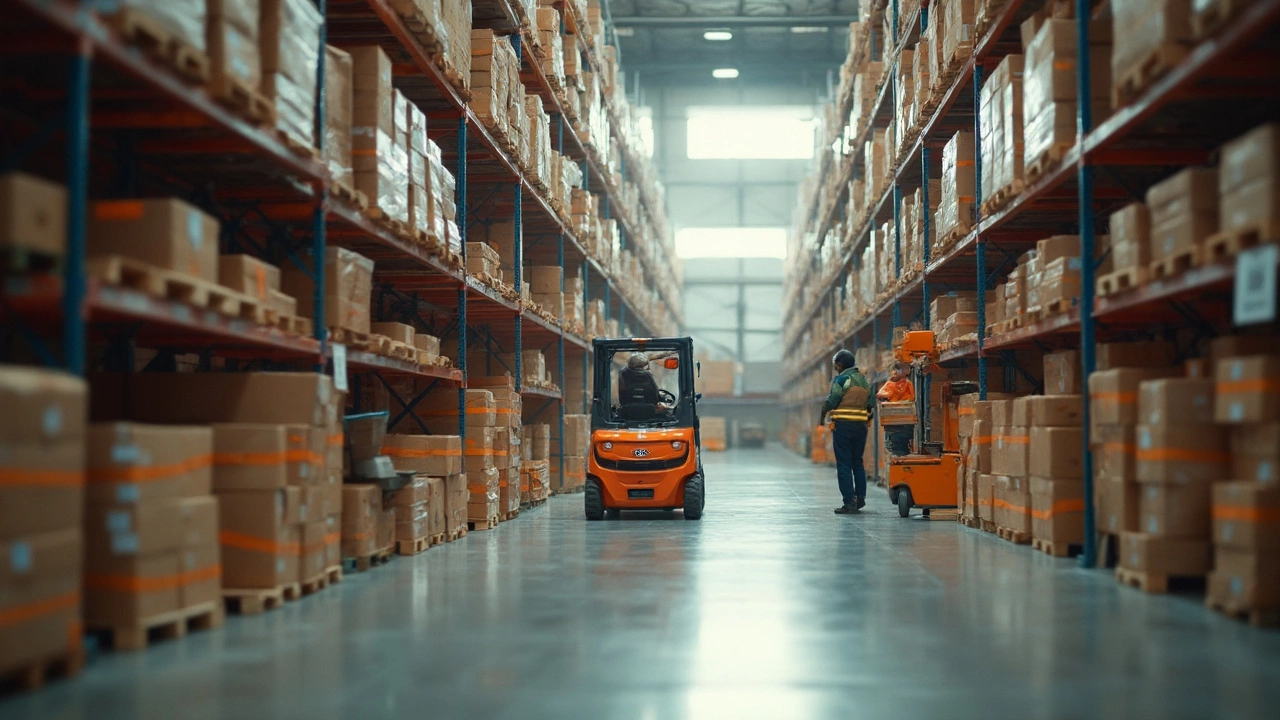
Tips for Working with the Biggest Players
If you ever find yourself shipping with the largest logistics company—like UPS or DHL—there are a few things you should keep in mind so you don’t get lost in the shuffle. While these companies are pros, their size can mean tricky policies and plenty of moving parts. Here’s what I’ve learned (sometimes the hard way) working with these giants:
- Don’t Skip the Fine Print: Big logistics companies have rules for everything, from package sizes to restricted items. Before you ship, double-check what’s allowed so your stuff doesn’t get stuck somewhere weird.
- Track and Communicate: Use their tracking tools. UPS, for example, updates tracking hundreds of times a minute worldwide. If something looks off, don’t be shy about calling their hotline or chatting online—they actually want to smooth things out quickly.
- Negotiate Rates: Shipping a lot or have regular orders? Ask for a volume discount. Large shippers usually get better rates, and you can sometimes talk your way into a better deal. Seriously, just ask—Everett’s school PTA did this to save on sending fundraising stuff!
- Jump on Tech Tools: DHL has a mobile app for live tracking and scheduling deliveries. UPS My Choice gives you control over package redelivery or pickups. Take advantage of these extras—they’re time savers and can help you avoid missed deliveries.
- Plan Around Peak Times: Holidays and sales events (think Black Friday) bog down even the big names. Ship early or ask for guaranteed delivery options so you’re not stuck sweating late packages.
Here’s a quick comparison table showing some practical facts about the top players:
| Company | Parcel Volume (2024) | Global Reach | Speed Options | Key Tech Features |
|---|---|---|---|---|
| UPS | 6.5 billion | 220+ countries | Same day, Next day, Standard | UPS My Choice, Real-Time Tracking |
| DHL | 2.6 billion | 220+ countries | Express, Economy Select | DHL Express Mobile App, Customs Clearance Tools |
Bottom line: these companies move billions of packages every year, so learning their systems is smart. Stay organized, don’t be afraid to ask for help, and use every tech trick they offer. It’ll save you headaches—and maybe some cash.
